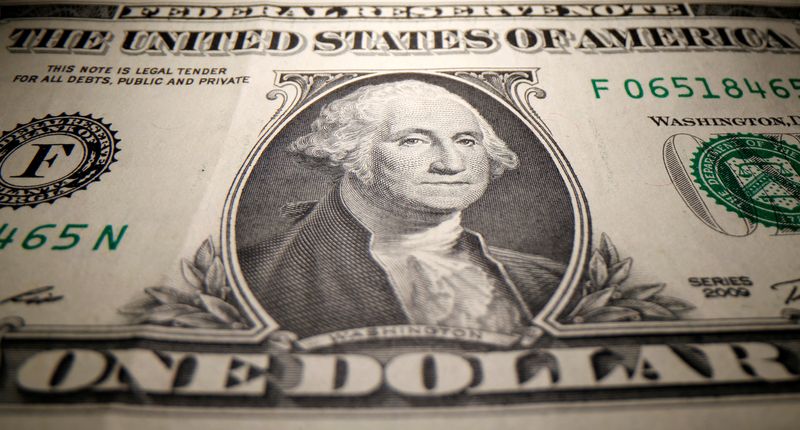By Joice Alves and Ankur Banerjee
LONDON/SINGAPORE (Reuters) -The dollar rose on Friday, heading for its steepest weekly rise since May as traders scaled back expectations of early U.S. interest rate cuts this year.
The U.S. currency's strong start has cast a shadow on the euro even as rising inflation in the euro zone appeared to ease market pressure on the European Central Bank (ECB) to lower interest rates.
The dollar's rebound will be tested by the non-farm payrolls report due later in the day. Economists polled by Reuters forecast that 170,000 jobs were created in December, fewer than the 199,000 in November.
Federal Reserve officials in December predicted 75 bps of rate cuts in 2024. Money markets expected around double that amount, with such expectations spurring a year-end blistering rally in stocks and bonds.
But since the start of the year, markets have dialled back their expectations. Traders are now pricing in less than 140 basis points of cuts this year, with the chance of a cut in March at 62%, down from 86% a week earlier, CME FedWatch tool showed.
Moh Siong Sim, currency strategist at Bank of Singapore said the data this week has shown that the U.S. labour market seems to be holding up and "perhaps the Fed will still need to stress the message of keeping the rates a bit longer than what the market has already priced in".
"But we'll see, because tonight's payroll data will be key data to watch."
Supporting the dollar, data showed on Thursday that U.S. private employers hired more workers than expected in December, pointing to persistent strength in the labour market that should continue to sustain the economy.
The dollar was last up 0.25% against a basket of currencies at 102.69, after touching a fresh three-week high. The index is up 1.3% for the week, its strongest performance since the week ending May 15.
EURO ZONE INFLATION
The euro fell 0.24% to $1.0919, and is on track for a 1.09% decline in the week, its sharpest weekly drop since early December, and snapping a run of three weeks of increases.
Inflation across the 20-nation bloc jumped to 2.9% in December from 2.4% in November, just shy of expectations for a 3.0% reading.
The data is line with the ECB's prediction that inflation bottomed out in November and will now flatline in the 2.5% to 3% range through 2024, well above the bank's 2% target, before slowing again in 2025.
Investors and policymakers disagree on the number of rate cuts likely this year. Traders are betting that the ECB will cut rates six times this year with the first move coming in March or April. Policymakers argue that it might take until mid-2024 to gain the confidence that inflation is under control.
“Today’s data will have only made investors more concerned about whether the ECB will take it too far by being too restrictive with their policy, which will likely hinder growth in the process," said Daniela Hathorn, senior market analyst at Capital.com.
Elsewhere, the yen, which is highly sensitive to U.S. bond yields, weakened 0.37% to 145.14 per dollar, after touching a more than three-week low earlier in the session.

The 10-year U.S. Treasury yield broke through the psychological 4% mark and was last at 4.04%. [US/]
Investors have tempered their expectations of the Bank of Japan exiting its ultra-loose monetary policy in the near term, with concerns over the earthquake that hit western Japan earlier this week casting further doubts on a policy shift.